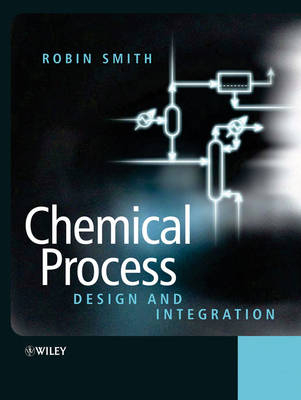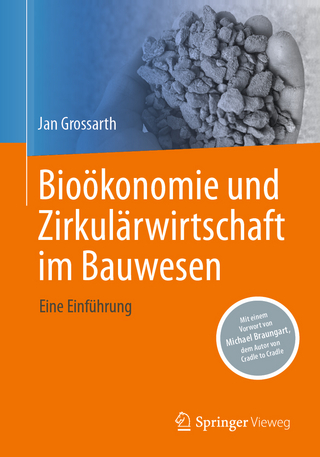
Chemical Process Design
John Wiley & Sons Ltd (Verlag)
978-0-471-48680-0 (ISBN)
- Titel ist leider vergriffen;
keine Neuauflage - Artikel merken
This book deals with the design and integration of chemical processes, emphasizing the conceptual issues that are fundamental to the creation of the process. Chemical process design requires the selection of a series of processing steps and their integration to form a complete manufacturing system. The text emphasizes both the design and selection of the steps as individual operations and their integration. Also, the process will normally operate as part of an integrated manufacturing site consisting of a number of processes serviced by a common utility system. The design of utility systems has been dealt with in the text so that the interactions between processes and the utility system and interactions between different processes through the utility system can be exploited to maximize the performance of the site as a whole. Chemical processing should form part of a sustainable industrial activity. For chemical processing, this means that processes should use raw materials as efficiently as is economic and practicable, both to prevent the production of waste that can be environmentally harmful and to preserve the reserves of raw materials as much as possible.
Processes should use as little energy as economic and practicable, both to prevent the build-up of carbon dioxide in the atmosphere from burning fossil fuels and to preserve reserves of fossil fuels. Water must also be consumed in sustainable quantities that do not cause deterioration in the quality of the water source and the long-term quantity of the reserves. Aqueous and atmospheric emissions must not be environmentally harmful, and solid waste to landfill must be avoided. Finally, all aspects of chemical processing must feature good health and safety practice. It is important for the designer to understand the limitations of the methods used in chemical process design. The best way to understand the limitations is to understand the derivations of the equations used and the assumptions on which the equations are based. Where practical, the derivation of the design equations has been included in the text. The book is intended to provide a practical guide to chemical process design and integration for undergraduate and postgraduate students of chemical engineering, practicing process designers and chemical engineers and applied chemists working in process development.
Examples have been included throughout the text. Most of these examples do not require specialist software and can be performed on spreadsheet software. Finally, a number of exercises have been added at the end of each chapter to allow the reader to practice the calculation procedures.
Professor Robin Smith is Head of the Centre for Process Integration at the University of Manchester Institute of Science and Technology (UMIST) in the United Kingdom. Since joining, Professor Smith has acted extensively as a consultant in process integration projects and manages the Process Integration Research Consortium at UMIST, which sponsors and acts as a test-bed for the research in process design and integration. Before joining UMIST Smith had extensive industrial experience with Rohm & Haas in process investigation and process design, and with ICI in computer-aided design and process integration during which time he was a member of the ICI Process Integration Team that pioneered the first industrial applications of process integration design methods. Professor Smith is also a Fellow of the Royal Academy of Engineering, a Fellow of the Institution of Chemical Engineers in the UK and a chartered engineer. In 1992 he was awarded the Hanson Medal of the Institution of Chemical Engineers in the UK for his work on clean process technology.
Preface Acknowledgements Nomenclature Chapter 1 The Nature of Chemical Process Design and Integration. Chapter 2 Process Economics. Chapter 3 Optimization. Chapter 4 Phase Equilibrium and Thermodynamic Properties. Chapter 5 Choice of Reactor I -- Reactor Performance. Chapter 6 Choice of Reactor II -- Reactor Conditions. Chapter 7 Choice of Reactor III -- Reactor Configuration. Chapter 8 Choice of Separator for Heterogeneous Mixtures. Chapter 9 Choice of Separator for Homogeneous Fluid Mixtures I -- Distillation. Chapter 10 Choice of Separator for Homogeneous Fluid Mixtures II -- Other Methods. Chapter 11 Distillation Sequencing. Chapter 12 Distillation Sequencing for Azeotropic Distillation. Chapter 13 Reaction, Separation and Recycle Systems for Continuous Processes. Chapter 14 Reaction, Separation and Recycle Systems for Batch Processes. Chapter 15 Heat Exchanger Networks I -- Heat Transfer Equipment. Chapter 16 Heat Exchanger Networks II - Energy Targets. Chapter 17 Heat Exchanger Networks II - Capital and Total Cost Targets. Chapter 18 Heat Exchanger Networks III - Network Design. Chapter 19 Heat Exchanger Networks IV -- Stream Data. Chapter 20 Heat Integration of Reactors. Chapter 21 Heat Integration of Distillation. Chapter 22 Heat Integration of Evaporators and Dryers. Chapter 23 Steam Systems and Cogeneration. Chapter 24 Cooling and Refrigeration Systems. Chapter 25 Environmental Design for Atmospheric Emissions. Chapter 26 Water System Design. Chapter 27 Inherent Safety. Chapter 28 Waste Minimization. Chapter 29 Overall Strategy for Chemical Process Design and Integration. Appendix A Annualization of Capital Cost. Appendix B Gas Compression. Appendix C Heat Transfer Coefficients and Pressure Drop in Shell-and-Tube Heat Exchangers. Appendix D Maximum Thermal Effectiveness for 1-2 Shell-and-Tube Heat Exchangers. Appendix E Expression for the Minimum Number of 1-2 Shell-and-Tube Heat Exchangers for a Given Unit. Appendix F Algorithm for the Heat Exchange Area Target. Appendix G Algorithm for the Number-of-Shells Target.Appendix H Algorithm for Heat Exchanger Capital Cost Target. Index.
| Erscheint lt. Verlag | 7.1.2005 |
|---|---|
| Zusatzinfo | Illustrations |
| Verlagsort | Chichester |
| Sprache | englisch |
| Maße | 216 x 279 mm |
| Einbandart | gebunden |
| Themenwelt | Naturwissenschaften ► Biologie ► Ökologie / Naturschutz |
| Naturwissenschaften ► Chemie ► Technische Chemie | |
| Technik ► Umwelttechnik / Biotechnologie | |
| ISBN-10 | 0-471-48680-9 / 0471486809 |
| ISBN-13 | 978-0-471-48680-0 / 9780471486800 |
| Zustand | Neuware |
| Haben Sie eine Frage zum Produkt? |
aus dem Bereich


